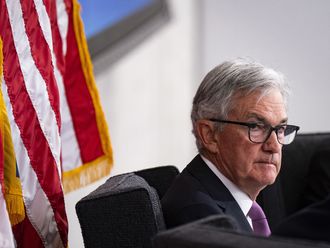
Dubai: Non-performing loans (NPLs) of the UAE banks are expected to peak above 10 per cent this year up from 8.3 per cent in 2010 and 4.9 per cent in 2009, rating agency Moody's said in a report Thursday.
Moody's expects the upcoming Dubai Holding's $10 billion (Dh36.7 billion) debt restructuring will be one significant contributor to this year's NPL levels.
"Dubai-based banks typically have high exposures to Dubai government-related entities, and we consequently expect NPLs to peak in 2011 at around 6 per cent to 8 per cent in Abu Dhabi and 11 per cent to 14 per cent in Dubai," said Khalid Howladar, vice-president — Senior Credit Officer at Moody's.
Projected surge
Despite a projected surge in overall NPLs for the year, the rating agency said the UAE benefits from the twin growth engines of Abu Dhabi and Dubai.
Both are showing signs of recovery in key sectors such as tourism, transport, logistics and both benefit from sizeable state intervention in the economy, particularly support for distressed strategic and government-related corporates.
However, a substantial debt overhang, corporate leverage, delayed restructurings and persistent real estate weaknesses after an outsized property boom are constraining market confidence.
With varying levels of concentration risks and political uncertainties affecting the GCC, Moody's said GCC banking systems widely differ in their asset quality.
Local tensions
"Among GCC countries, Bahrain experienced the most significant local tensions and — notwithstanding significant political, financial [$10 billion] and security support measures from other GCC countries — it is highly likely that these events have seriously compromised Bahrain's long-term position as a stable financial hub," Moody's said.
Among the GCC banks, rating agencies in general view Saudi Arabian banks as mostly highly profitable and have perhaps the most unrealised potential for growth.
"We believe non-performing loans (NPLs) peaked in 2010 at a manageable 4 per cent of loans and expect to see some decline in second-half 2011," said Nicolas Charnay Associate Analyst with Moody's. "We expect the non-oil private sector to exhibit solid growth in 2011 owing to higher government spending on infrastructure and social programmes, in line with increased oil output and revenue."
Interest free deposits
The relatively low cost of funding, largely supported by interest free deposits, have kept most banks from external funding.
"The profitability of Saudi banks stems from a unique combination of factors," said Standard & Poor's credit analyst Nicolas Hardy. "They operate in a supportive operating environment because of high oil prices and the backing of a cash-rich government. They also benefit from a protected franchise with high barriers to entry and a limited number of players."
Analysts believe Qatari banks remain insulated from regional and global economic volatility. Qatar has been the most active among GCC countries in its support of banks through a variety of measures, including liquidity support, and $6 billion of purchases of equity stakes and problem-asset purchases.
"We expect that NPLs have peaked in 2010 at around 4 per cent. With projected GDP growth of approximately 15 per cent per year and the additional [$65 billion] stimulus of infrastructure investment for the 2022 football World Cup, local banks will continue to benefit substantially from government-driven economic activity," said Moody's Howladar.
Potential risks
Despite a perceived peaking of NPLs in 2010, analysts see potential risks in asset quality of Kuwaiti banks. "Kuwait's investment companies accounted for around 11 per cent of lending at year-end 2010. Such firms are a key NPL driver, as the leveraged business models of these diverse institutions collapsed amid funding mismatches and rapid asset-price declines.
Oman has a small and relatively introverted banking system with a robust domestic performance. Moody's believe Omani banks' NPLs peaked at around 5 per cent last year.
Dubai Despite huge commitment of resources to economic diversification across the GCC, sector concentration remains a major risk for the banking sector in the region, according to rating agencies.
Diversification
"The UAE is the only country to achieve a strong measure of economic diversification and this ongoing process has so far taken decades. As such, high corporate concentration and a narrow economic base dominated by energy and real-estate related businesses will remain enduring features of the local banking systems," said Khalid Howladar, vice-president, senior credit officer at Moody's.
On the asset quality front, Standard & Poor's sees real estate related risks and single party concentrations as the biggest concern for the GCC banking sector in the future. S&P data shows the NPL stock for rated banks stabilized at about $20 billion at the end of 2010.
"These data should be interpreted with care as there are inconsistencies with regards to the accounting of the restructured loans and some banks moved large amounts of NPLs to off-balance sheets," said Goesksenin Karagoez, a rating analyst with S&P.
Corporate governance issues continue to plague asset quality in the GCC. "Governance is still relatively weak in the GCC, with a high incidence of related-party lending and some limited disclosure, but this is improving following some large local defaults," Moody's said in a report Thursday.
The rating agency considers that not all loans with embedded losses have been identified and classified as non-performing and these reporting lags will cause problems in accurately assessing the extent of problems.












